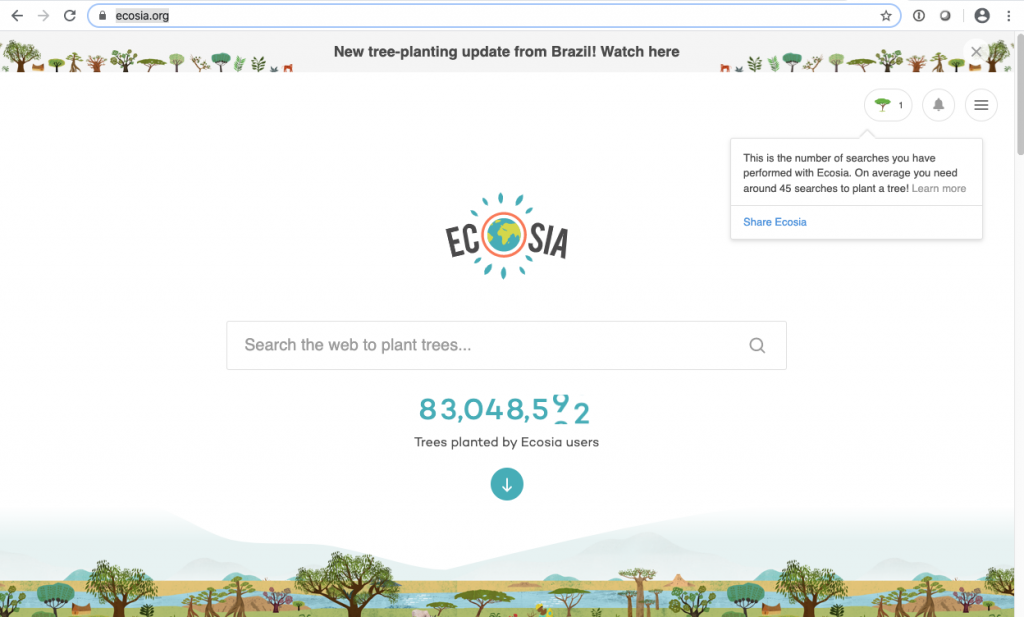
Getting your technology right can help reduce energy use, cut CO2 emissions, and limit the amount of waste going to landfill.
Not that saving the planet is as easy as it sounds: Google famously changed its homepage dark for Earth Hour in 2008, saving no electricity whatsoever.
You can do better.
-
Try out Ecosia.org
Ecosia is a German not-for-profit search engine that plants trees with the advertising revenue it generates from search results.
For transparency, the carbon-negative organisation publishes a regular easy-to-follow report into its environmental activity and finances on the Ecosia blog.
At time of writing, around 83 million trees have been planted worldwide across at least 16 countries – and assuming you don’t clear your browser settings, Ecosia also keeps a total count of your personal searches. Supported by Microsoft Bing, Ecosia’s searching is encrypted, results are not stored, and data is not sold to any third-party advertisers.
Around 45 searches equates to one new tree – so get searching!
-
Video Conference, Don’t Travel
Business travel, especially air travel, isn’t as necessary as it used to be, and it’s increasingly difficult to justify time spent sat in traffic.
Clever video-conferencing software that includes screen-share, meeting record and web-based guest access – such as Microsoft Teams or Gamma Collaborate – make it easier to hold meetings remotely, at a tiny fraction of the CO2 output.
Video conferencing was once a bit of a standing joke, but with responsive video quality, devices with in-built microphones/cameras/speakers, and better internet connectivity, the technology is much more practical than was once the case.
For an easy way to gauge the costs involved, add up mileage expenses for a week, month or year, and ask which meetings really had to be conducted by travelling. If that expense could be saved, so could the planet.
-
Use an Eco Button (Or Don’t)
There are a number of gadgets available that prompt office workers to turn off their screens, most famously the ‘Eco-button’ – a bright green light-up USB button which you hit to switch your PC into sleep mode. On startup, a small application praises your efforts by displaying your CO2 and cost saving to date.
Unfortunately this is arguably an example of greenwashing. The plastic device (probably shipped from China) isn’t actually necessary to enable device sleep settings – Windows 10 already has handy power-saving options available, so aside from the software recording your savings, the button mainly serves only to raise awareness and act as a fun reminder.
Hopefully each eco-button might one day have saved enough CO2 to justify its own manufacture… maybe. But with a little vigilance, this ought to be achievable without quite so much plastic.
-
Return your old Router
Switching broadband services often means a new router, which isn’t ideal for cutting plastic waste.
Some ISP’s allow users to voluntarily return a redundant router for recycling, in an effort to cut down on routers being piled up in cupboards, and ensure fewer of their devices ultimately end up in landfill.
BT recently announced this scheme will soon be compulsory, and new customers who fail to return their BT router for recycling at the end of the contract using a pre-paid return envelope will face an extra charge of up to £50.
Alternatively, many local councils now allow the recycling small electrical items with household recycling, so there’s little excuse for throwing out this kind of equipment.



